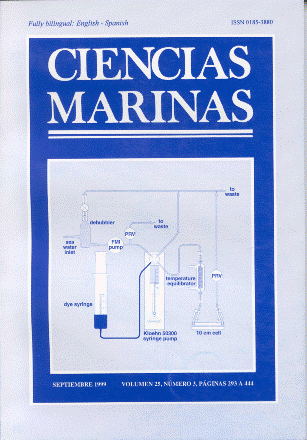The use of a bioeconomical model in the fishery of the red sea urchin, Strongylocentrotus franciscanus, from the northwestern coast of Baja California, Mexico
Main Article Content
Abstract
The commercial fishery of the red sea urchin, Strongylocentrotus franciscanus, an important resource in Baja California, is showing signs of overexploitation. The yield per recruit and the Beverton and Holt optimization dynamic models were used to find the size at first capture that allows maximum profits and keeps the resource at a sustainable level for future generations. The biological parameters used were L = 155 mm, K = 0.22 and M = 0.22. The yield per recruit model suggests that to maximize yield it is necessary to increase the size of first capture to 105 mm with fishing mortality close to 0.65. The results of the dynamic optimization model indicated that the size of optimum catch and cohort biomass decrease as the discount rate increases, and this is reflected in a reduction of the yields. For discount rates lower than 5%, which is recommended for this fishery, the size of optimum catch is located between 110 and 116 mm. Both models suggest that the minimum legal size established by the Ministry of Natural Resources, Environment and Fishing (SEMARNAP) of 80 mm for the red sea urchin is below the size that allows obtaining optimal gains. In order to obtain large catches in the long term and to maximize the economical profits it is necessary to increase the size of first capture to 110 mm. For the discount rate of 0% a time interval was calculated in which fishing takes place with a maximum rate. The results indicate that the fishing season can be reduced from eight to four months.
Downloads
Article Details
This is an open access article distributed under a Creative Commons Attribution 4.0 License, which allows you to share and adapt the work, as long as you give appropriate credit to the original author(s) and the source, provide a link to the Creative Commons license, and indicate if changes were made. Figures, tables and other elements in the article are included in the article’s CC BY 4.0 license, unless otherwise indicated. The journal title is protected by copyrights and not subject to this license. Full license deed can be viewed here.

